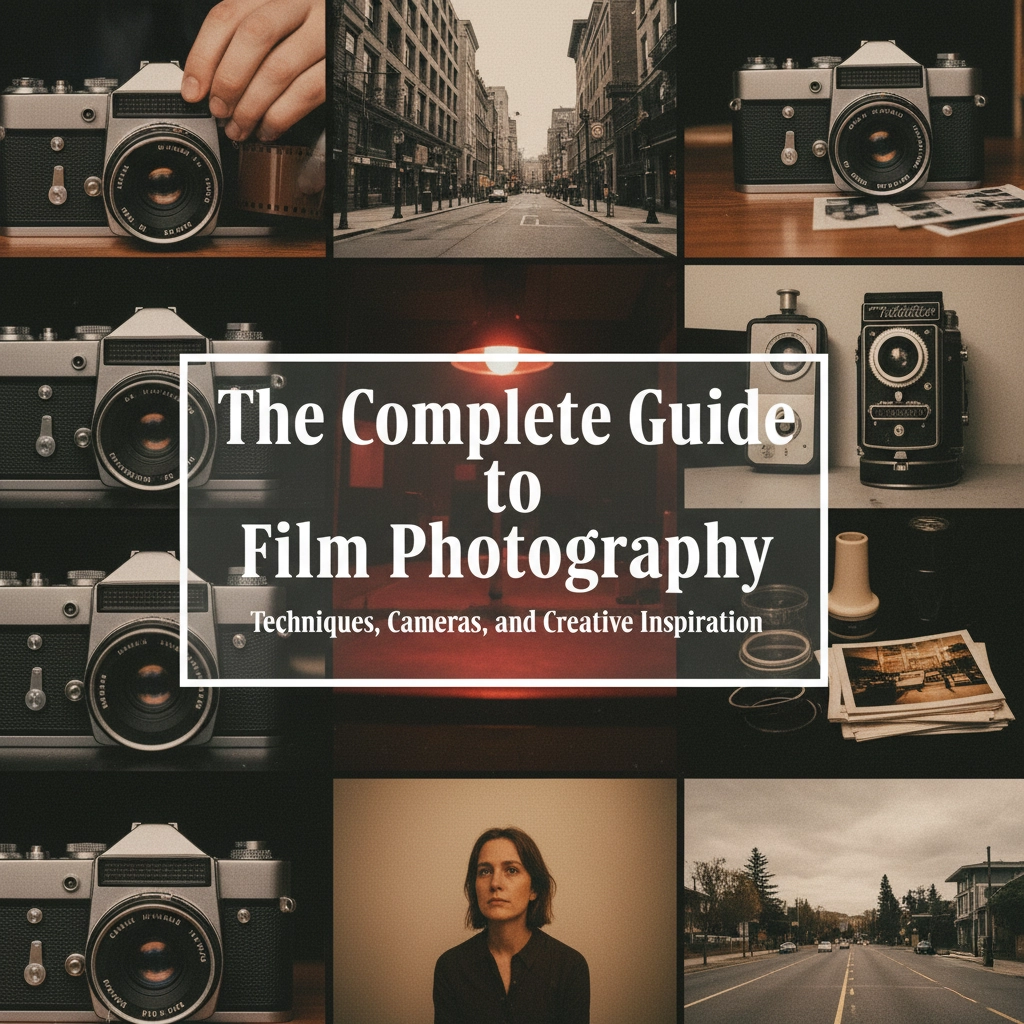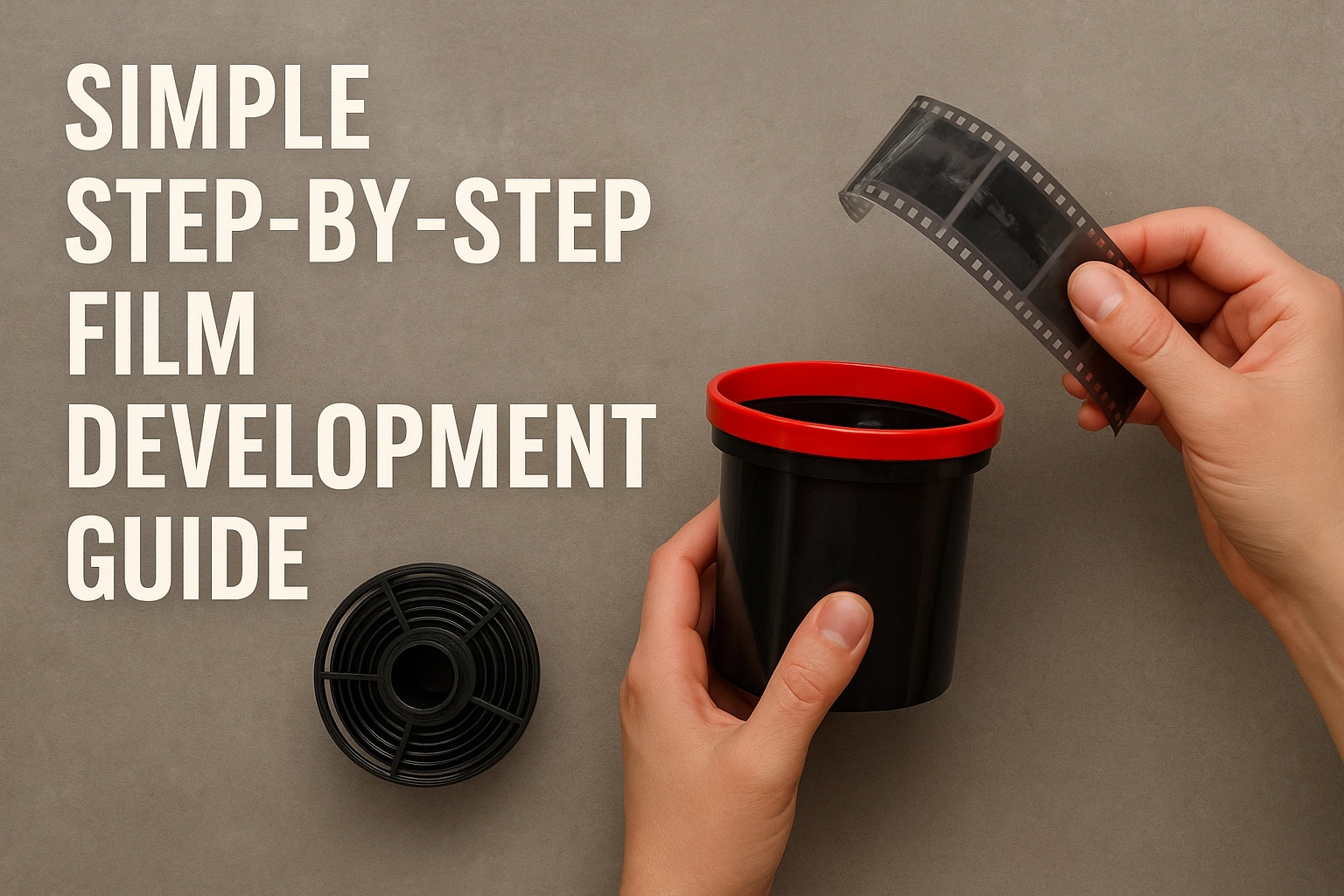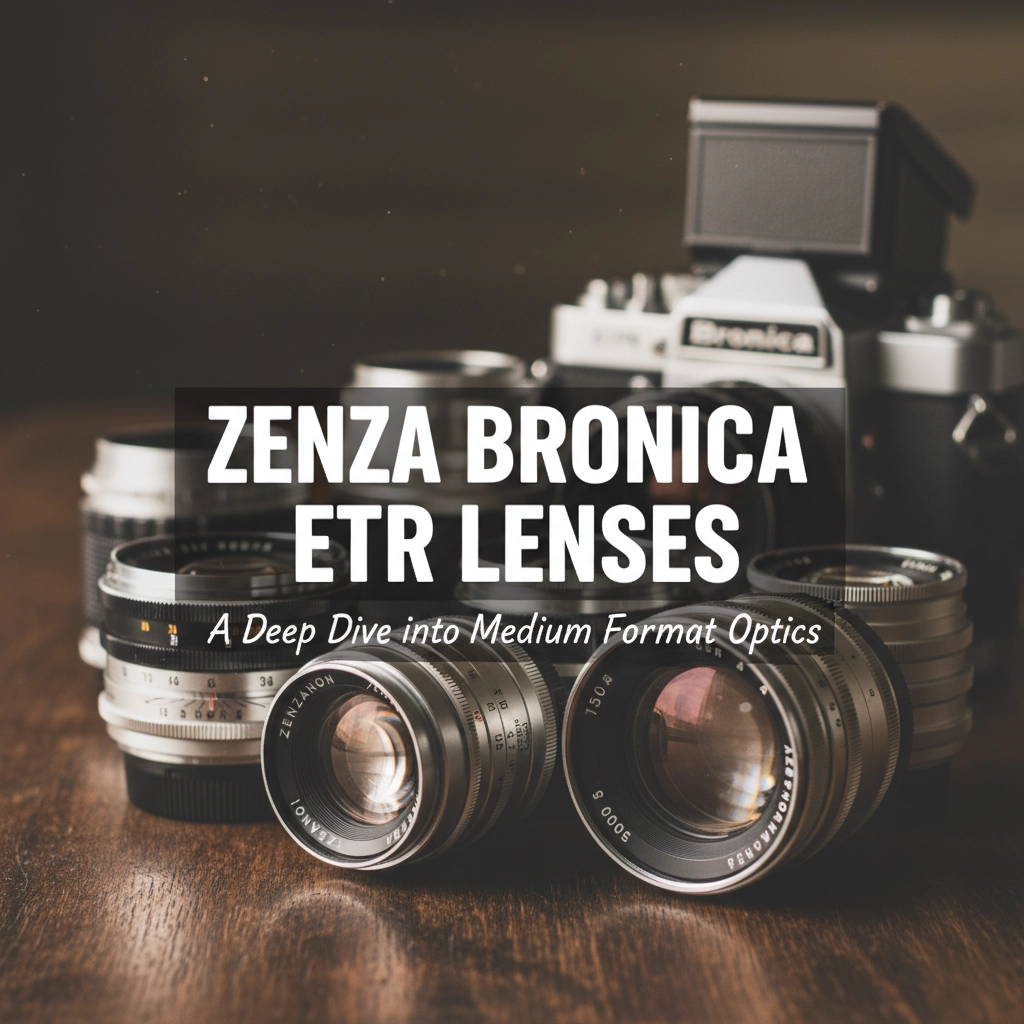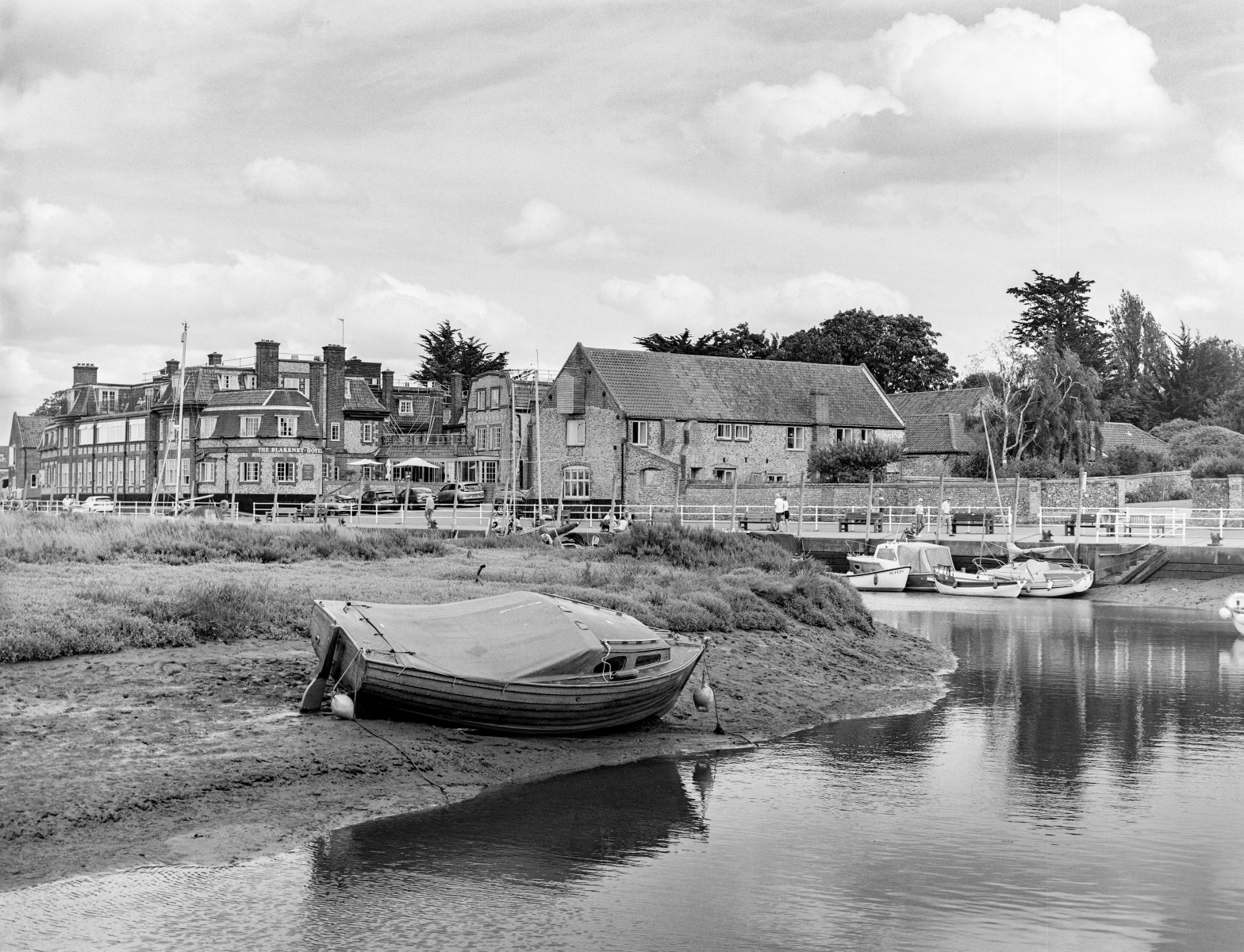Film photography has made a striking return, proving it’s far more than nostalgia. The Film Photography Guide you’re reading is designed as a complete resource — not only covering cameras and film stocks, but also creative approaches, technical skills, and inspiration to help you develop your craft. Whether you’re just starting with your first roll of 35mm…
Category: Film Photography
The Film Photography category explores working with analogue cameras as both a technical craft and a slower, more deliberate way of seeing.
Posts here cover 35mm and medium format film photography, including camera use, shooting approach, development choices, and reflections on why film continues to matter in a digital world. Alongside practical insight, there’s an emphasis on patience, intention, and learning through limitation.
This section is written for photographers drawn to the tactile, thoughtful nature of film — whether you’re refining your technique or reconnecting with photography at a calmer pace.
Developing black and white film at home can be a rewarding and creative process. With the right equipment, chemicals, and a bit of patience, you can create beautiful images right from your negatives. Whether you’re shooting 35mm, medium format, or large format, the process is generally the same, with slight adjustments depending on the film…
Rediscovering Simplicity Through Film In a world of high-resolution digital sensors and instant previews, there’s a quiet magic in returning to film. Recently, I took a walk along the Kennet and Avon Canal, a stretch leading into Newbury, England, armed not with a modern mirrorless setup, but with my Canon EOS 300V, a roll of Kentmere Pan 100, and…
Photographing Aldermaston Wharf with the Bronica ETRSi and Kentmere Pan 100 – Medium Format Photography There is something quietly timeless about England’s canal network, particularly on a still Sunday morning. The soft reflections, moored narrowboats, distant bird calls, and the rhythm of footsteps on the towpath—it all invites a slower kind of seeing, and for…
Exploring the Ancient Wall Through Experimental Analogue Photography 35mm Film in Medium Format Camera – In the quiet pre-dawn hours, I ventured out to the Silchester Roman Wall—a place steeped in history and mystery. But this wasn’t just another early morning shoot. Armed with a roll of Kentmere Pan 400 35mm film, a Zenza Bronica medium format camera,…
There’s something quietly exciting about trying out new gear in familiar places—especially when that gear is as classic and simple as yellow filter photography. A few weeks ago, I finally got around to testing a Pig Iron Yellow Filter I’d picked up on eBay (also spotted it on Amazon). I paired it with my Zenza Bronica medium format…
Discovering Exposure the Old-School Way – On a clear, cloudless day at Silchester Roman Wall (Calleva Atrebatum), I decided on using the Sunny 16 Rule for the very first time. Armed with my Bronica ETRSi medium format camera and the 75mm lens, I loaded up a roll of Kentmere Pan 100 and left the light meter behind, Using the Sunny 16 Rule.…
Motion blur photography is a powerful creative technique that transforms everyday scenes into abstract, dreamlike compositions. While often associated with digital photography, shooting motion blur on film presents a unique set of challenges and rewards. For this latest experiment, I used my Canon EOS 300v loaded with Ilford FP4+ film, pushed two stops to enhance…
One of my most exciting gifts this Christmas was a “Build Your Own Twin Lens Reflex Camera” kit. As someone passionate about analogue photography, the thought of assembling my own camera was thrilling. In this blog post, I’ll take you through the journey of building this camera—explaining what’s inside the kit, the assembly process, and…
If you’re a fan of film photography (Kentmere Pan 100 Macro Photography) and love exploring the tiny wonders of the world through macro, Kentmere Pan 100 might just become your new favourite companion. This affordable black-and-white film stock is a hidden gem for photographers seeking fine detail, smooth tonal range, and a classic aesthetic. In this…
Exploring the F1 Show at Excel Arena The Excel Arena near Victoria Docks hosted an unforgettable daytime event: the F1 Show, focusing on the rich history of Formula 1. As a photography enthusiast, I saw this as a perfect opportunity to test Kentmere 400, a budget-friendly 35mm film known for its versatility. My day revolved…
First Impressions of Kentmere 35mm Film Kentmere Pan 400 has always intrigued me as an affordable, versatile black-and-white film stock. On the evening of December 19th, with Christmas just around the corner, I ventured to Borough Market in London to put this film to the test. Armed with my trusty Canon 300V and a roll…
When I set out for a day of street photography, I chose Kentmere Pan 400—a versatile, budget-friendly black-and-white film. Its ISO 400 speed seemed ideal for dynamic street scenes, offering flexibility in lighting conditions. My chosen locations, the streets of Witney in Oxfordshire and Winchester in Hampshire, each presented unique opportunities for storytelling through the…
The Challenge of Overcast Days Film photography is often about choosing the right film, preparation, intuition, and adaptability. On a recent walk along the Kennet and Avon Canal, armed with my trusted Bronica ETRSi, tripod, and cable release, I chose Ilford Pan F ISO 50 for its fine grain and sharp detail. This choice, however,…
Embracing a Slower Pace with Film Photography The Kennet and Avon Canal stretch between Aldermaston Wharf and Thatcham is one of those rare places where time slows. With my Bronica ETRSi, loaded with Ilford HP5+ medium format film, I set out to capture the atmosphere on medium format—a format that brings out every texture, shade,…
As an analog photography enthusiast, there’s something magical about experimenting with different films and development techniques. One film that has never failed to captivate me is Kodak Tri-X 400. This black-and-white classic has been around for decades, and for good reason—it delivers beautifully rich contrast, deep shadows, and luminous highlights. But there’s something even more…
As the final day of meteorological summer approached, I found myself drawn to the ancient woodlands of Morgaston Wood. The afternoon light was soft, the shadows long, and the air thick with the scent of summer giving way to autumn. It was the perfect time for a photographic exploration, armed with my Bronica ETRSi, loaded…
The Zenza Bronica ETR series was a line of medium format cameras produced by Zenza Bronica, a Japanese camera manufacturer known for high-quality, professional cameras. The Zenza Bronica ETR Lenses series includes several models, such as the ETR, ETRC, ETRS, and ETRSi, and they all use a 6×4.5 cm film format. These cameras were widely…
Exploring Blakeney Quay with Ilford FP4 and Bronica ETRSi, Nestled along the serene coast of North Norfolk, stands as a picturesque testament to the region’s maritime heritage and natural beauty. This quaint harbour village, with its timeless charm and stunning views of the North Sea, has long been a magnet for travelers seeking a glimpse…
Kodak Ultramax 400 is a versatile colour negative film, known for its vibrant colour reproduction and fine grain. I chose this film for my trip to the North Norfolk Coast because of its ability to handle diverse lighting conditions, making it perfect for capturing the region’s dynamic landscapes. My journey included three picturesque locations: the…



















